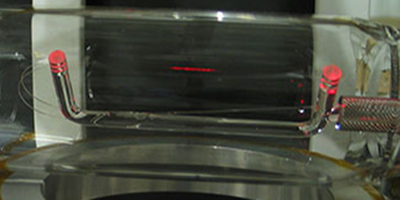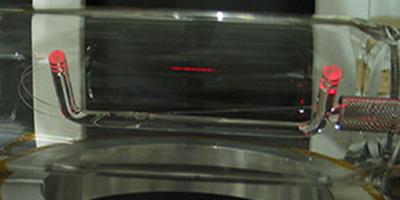Counting Atoms without Disturbance
Atoms trapped in optical lattices could be used to make ultraprecise atomic clocks and quantum computers, provided the number of trapped atoms is precisely known. A new method can count the atoms in a one-dimensional trap without disturbing too many of them. This minimally invasive technique can be used to control the number of atoms with an uncertainty that’s nearly a factor of 10 less than the random, so-called “shot,” noise.
When atoms are trapped for use in quantum devices like atomic clocks, random fluctuations in the trapping process will lead to a number of atoms with an uncertainty ultimately limited by shot noise—the noise associated with the discrete nature of the particles. To reduce this uncertainty, researchers have recently developed new ways to count atoms. But often these methods are invasive, causing atoms to scatter out of the system, worsening the counting precision.
Jürgen Appel and his colleagues from the University of Copenhagen in Denmark have developed an atom-counting strategy for a one-dimensional trap made along a 500-nanometer-diameter optical fiber. Two light beams propagating in the fiber generate a standing light wave just above the surface that traps atoms in a linear lattice. The researchers trapped cesium atoms and then sent through the fiber two probe beams, whose frequencies were tuned slightly to the red and the blue of a particular cesium transition. Interactions with the atoms cause the red-shifted probe to travel more slowly than the blue-shifted one, and this difference signal reveals the number of atoms. Because the atom loss from the probe interaction is low, the authors are able to take multiple measurements and, with the help of a statistical “bootstrapping” method, they can set the number of atoms to 1300 atoms, for example, with an uncertainty of , a large improvement compared to the shot noise limit of 70.
–Michael Schirber
This research is published in Physical Review Letters.





